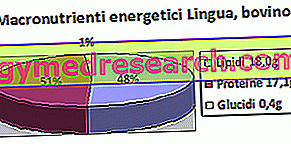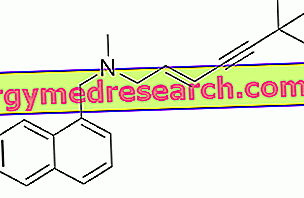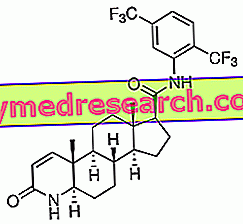Generality
The tongue is a meat food belonging to the offal group (fifth quarter of the slaughtered animal).

The tongue is a product that requires careful and prolonged cooking, an aspect which, together with the considerable fat content, gives it a rather limited digestibility. The most famous language-based recipe is the "corned tongue". NB . The tongue may be among the pieces used in the formulation of sausages to be cooked, as long as the surface epithelium is removed.
Language: food hygiene
It is important to remember that the oral cavity, second only to the large intestine, is a very rich site of bacterial colonies, both physiological and pathological. This also applies to animals and those intended for slaughter are no exception. This must give rise to the awareness that the processing of the language should at least be "careful", not so much because of the contamination of the food itself, but because of the risk of cross contamination towards other preparations already cooked.
Traces (or real colonies) of Yersinia enterocolica, an undesirable pathogen potentially responsible for food diseases, are frequently found on the tongue (especially pig). It is therefore essential to treat the tongue carefully and in an isolated manner, taking care to sanitize all the support surfaces that have come into contact with the raw food.
Furthermore, it is also interesting to note that some insights have brought to light a certain frequency of the accumulation of tin in the calf tongue.
Cooking and nutritional characteristics of the tongue
The preparation of the tongue is rather painstaking since it requires several precautions before, during and after heat treatment; depending on the animal, the specific recipe and personal tastes, the language can be: peeled and then cooked, cooked and then skinned or cooked and eaten whole (peeling it directly on the plate). Peeling apart, the tongue is a food that needs:
- Maturing: after slaughter, the tongue must rest several days before cooking, so that the muscle softens until it acquires a soft consistency
- Surface cleaning: in the butcher's shop, the tongue undergoes a preventive cleaning even before maturing; however, even before cooking, an additional surface wipe with a hard bristle brush and salt never hurts
- Marinating or soaking: some subject the tongue to a short soak in cold water before cooking (about 120 '- to rehydrate it), while others prefer to soak it for half a day by changing the water frequently and adding or not: wine, salt and flavorings only at the last hour.
- Prolonged cooking: conflicting opinions exist on cooking the tongue. Some suggest to do it in "cold water" and others in "hot water";
I personally believe that the latter is the most correct method for boiled meat but, since it is the tongue, excessive hardening could occur due to the thermal shock. Certainly the treatment times vary according to the size, but they are never less than 60-90 '.Nutritional composition of the Bovine Tongue - Reference values of the INRAN Food Composition Tables 
Nutritional values (per 100 g of edible portion)
Edible part 100, 0g water 64, 0g Protein 17, 1g Lipids TOT 18, 0g Saturated fatty acids - Monounsaturated fatty acids - Polyunsaturated fatty acids - Cholesterol 119, 0mg TOT Carbohydrates 0.4g Glycogen 0.0g Soluble sugars 0.4g Dietary fiber 0.0g Power 232, 0kcal Sodium 73, 0mg Potassium 197, 0mg Iron 2, 8mg Football 9, 0mg Phosphorus 187, 0mg Thiamine 0, 13mg Riboflavin 0, 30mg Niacin 3, 90mg Vitamin A 0, 0μg C vitamin 3, 0mg Vitamin E -
At the end of the boiling, the tongue must cool down in the cooking liquid; others prefer to plunge it into cold water, but in any case it should never be left exposed to the air. At this point it is possible to peel it. For preservation, the tongue can be placed in the fridge duly wrapped in the film. If they are made of escalopes to be seasoned in an elementary way (oil, salt, pepper, vinegar, horseradish, sauces, etc.) or it is possible to work it further in a pan on onion, shallot, tomato, artichoke etc .; roasted tongue slices are also appreciated.
The tongue is a highly energetic food whose composition seems similar to a cut of very fat muscle, which is why it cannot be contextualised in the low-calorie diet aimed at reducing overweight; the calories of the tongue are however lower than the average of the preserved meats.
High concentrations of fats and proteins (in almost overlapping quantities) and traces of sugars are noted. The intake of fats, even without any official data on the breakdown, is in all probability in favor of the saturated which, in combination with high amounts of cholesterol, make the tongue a food to be consumed in moderation in case of hypercholesterolemia.
The tongue is also rich in purines, unwanted molecules and to be taken with extreme caution by those who suffer from metabolic alterations such as hyperuricemia or overt gout.
From a vitamin point of view, the tongue is very rich in iron (therefore it is indicated in the case of iron-deficient anemia), potassium and phosphorus. As far as vitamins are concerned, the water-soluble products of group B stand out, in particular: thiamine (vit. B1), riboflavin (vit. B2) and niacin (vit. PP).




